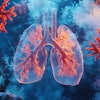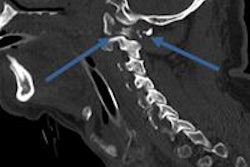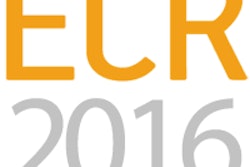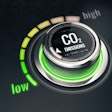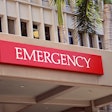
SAN FRANCISCO - As CT technology has gotten more complex, so have the protocols each department develops for particular studies. This complexity can make radiologists less efficient, as well as complicate how dose is monitored across a facility, according to a presentation delivered at the International Society for Computed Tomography (ISCT) 2016 Symposium.
The solution? Develop a master CT protocol concept, said Dr. Myron Pozniak of the University of Wisconsin-Madison.
"We've found that doing this has helped us set acquisition parameters for a wide range of clinical applications," he told session attendees.
Pozniak offered four suggestions for establishing a master framework, including batching protocols by type of study, filtering the number of protocols by unique acquisition parameters, using a mathematical formula to set dose, and using spreadsheets to track protocols.
An organic process
CT protocols evolve from pre-existing ones, and most develop organically in response to day-to-day demands, Pozniak said.
"A new scanner arrives, and the application specialist takes your protocols from another scanner, but tweaks them to accommodate the new scanner's architecture," he said. "Or a clinician comes in wanting to see something particular in a study, so you create a protocol for that."
The end result? Lots of protocols, Pozniak said. The University of Wisconsin's radiology department has 22 unique protocols for CT of the abdomen alone. Add in protocols for all the other types of studies, as well as adjustments for small, medium, and large patients, and the amount increases exponentially.
"At the end of the day, there are hundreds of protocols here," he said. "But if we take all these parameters and set them to a certain level of resolution and then batch by type of study, we can simplify the list."
Having a master protocol concept not only minimizes variance among scanners, but also facilitates dose monitoring (the same acquisition parameters used for multiple indications over the same body region should yield the same dose) and protocol monitoring (if the department gets negative feedback about one clinical protocol, it can review all clinical indications that use that same master protocol). As well, it makes it easier to create new protocols for new clinical needs.
"Our transplant team requested a new liver imaging protocol for hepatocellular carcinoma," Pozniak said. "We compared this clinical need to our current liver protocols and found we could add a delayed phase to our biphasic liver [protocol] to solve the problem."
But how?
So how can departments develop a master CT protocol? Pozniak offered four suggestions:
- Batch protocols by type of study to determine dose. Some exams can be conducted just fine at lower doses. "For example, one-eighth doses are tolerable for noncontrast CTA prescans, while one-quarter doses are acceptable for renal calculus detection," Pozniak said. "The key here is recognizing and agreeing on the image detail required for whatever condition you're imaging."
- Filter the number of protocols by unique acquisition parameters. "We've reduced the total number of unique kV/NI [kilovolt/noise acquisition] combinations in our body section by 38% after adopting this methodology," Pozniak said.
- Trust the math. "We relate all the most important CT protocol acquisition parameters for determining the required tube current [mA] by using a mathematical expression," Pozniak said. "The equation lets us easily create various dose protocols at different beam energy levels."
- Track your protocols using spreadsheets that categorize by body region and desired noise level. "We have spreadsheets for all our sections -- musculoskeletal, pediatrics, cardiovascular, chest, body, neuro," Pozniak said. "That way it's easy to see how we need to adjust the pitch/rotation time, and possibly the kV, in order to get the mA under the scanner's maximum."
Developing and implementing a master CT protocol concept can make a radiology department's day-to-day more efficient, Pozniak concluded.
"We're reversing gears here," he said. "CT has gotten more complicated, and we're trying to find a way to simplify it."
Study disclosures
The University of Wisconsin-Madison supplies CT protocols to a vendor under a licensing and distributor agreement, and Pozniak is the lead investigator of the effort. He is also a consultant to GE Healthcare.



